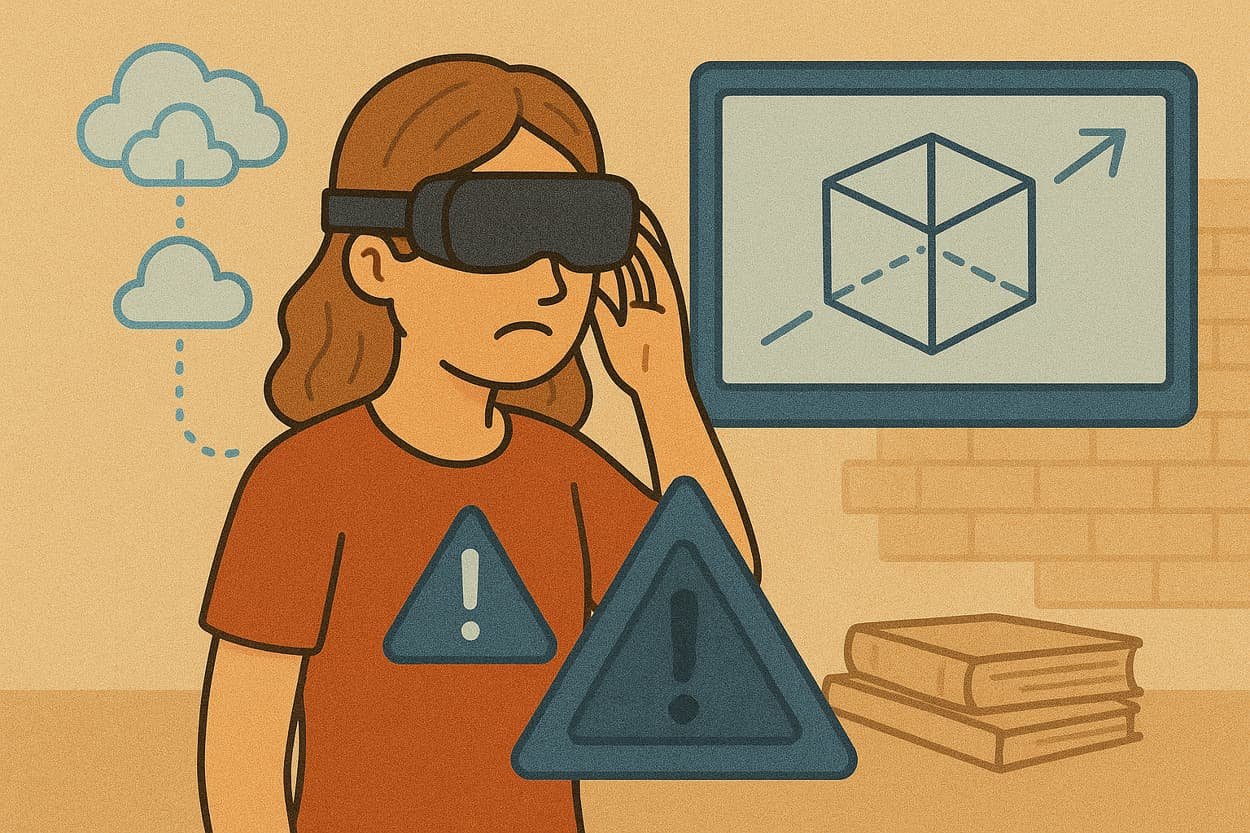Integrating Augmented Reality (AR) and Virtual Reality (VR) in education promises a more immersive and engaging learning experience. However, despite the potential benefits, many institutions struggle to implement these technologies effectively.
From infrastructure limitations to teacher training, several challenges hinder the widespread adoption of AR and VR in education. Understanding these obstacles is the first step toward developing solutions that can make immersive learning accessible to all students.
What Challenges Do Schools Face with AR/VR?
While AR and VR offer groundbreaking learning opportunities, their integration comes with key challenges, including:
- High Initial Costs: Headsets, software, and AR-enabled devices require significant investment, which can be difficult for budget-constrained schools.
- Technical Infrastructure: Not all educational institutions have the necessary internet bandwidth, storage, or device compatibility to support AR/VR applications.
- Teacher Training and Adoption: Many educators lack experience with AR/VR tools, making it difficult to integrate them into lesson plans.
- Content Availability: Quality AR/VR educational content is still limited, requiring institutions to create or adapt their own materials.
- Student Accessibility: Some students may not have personal devices or the necessary space to engage in VR-based learning effectively.
These factors make it challenging for schools to fully embrace AR/VR technology.
How Schools Can Overcome AR/VR Challenges
Despite these obstacles, schools and educators can take proactive steps to make AR/VR learning a reality:
- Leveraging Free or Low-Cost AR Apps: Many educational AR apps are available for mobile devices, reducing the need for expensive equipment.
- Seeking Government or Private Grants: Schools can apply for funding dedicated to technology adoption in education.
- Providing Teacher Training Programs: Workshops and online courses help educators integrate AR/VR tools into their classrooms.
- Using Web-Based AR: Browser-based AR eliminates the need for dedicated headsets and high-performance devices.
- Collaborating with EdTech Companies: Partnerships with technology firms can provide schools with discounts, trial programs, and content development assistance.
With these strategies, schools can start small and gradually expand AR/VR integration as resources allow.
Addressing Ethical and Privacy Concerns
As AR and VR collect and process student data, privacy and ethical concerns must be addressed:
- Student Data Protection: Schools must ensure that AR/VR applications comply with data privacy laws such as GDPR and COPPA.
- Screen Time Management: Excessive exposure to immersive technologies can affect students’ physical and mental well-being.
- Equity and Inclusion: Schools should develop inclusive AR/VR programs that accommodate students with disabilities and those from underprivileged backgrounds.
By setting clear guidelines and policies, institutions can create a safe and responsible AR/VR learning environment.
What’s Next for AR/VR in Education?
As technology advances, overcoming current challenges will become easier. Future developments include:
- More Affordable AR/VR Hardware: Lower-cost devices will make immersive learning accessible to a wider audience.
- AI-Enhanced AR/VR Experiences: Personalized learning through AI-driven virtual tutors.
- Cloud-Based VR Learning Platforms: Reducing hardware limitations by running VR applications directly from cloud servers.
- Expansion of Open-Source AR/VR Educational Content: More freely available resources for teachers and students.
These innovations will help bridge the gap between immersive technology and mainstream education.
Recommended Resources
For further insights into AR/VR adoption in education, explore these resources:
- EdWeek – Challenges of VR in Schools
- Tech & Learning – Benefits and Barriers of AR/VR
- eLearning Industry – The Future of AR/VR in Education
- Forbes – Immersive Learning in Classrooms
These sources provide useful strategies and case studies for schools integrating AR/VR.
Frequently Asked Questions
Here are some common questions about AR/VR adoption in education:
- Is VR too expensive for most schools? While high-end VR can be costly, budget-friendly alternatives like mobile AR apps and browser-based VR are available.
- Can AR/VR replace traditional teaching methods? No, AR/VR enhances traditional learning but should be used as a complementary tool.
- How can teachers start using AR/VR? They can begin with free applications and training programs before investing in advanced tools.
- Are there risks associated with too much VR exposure? Yes, prolonged use can lead to eye strain and disorientation, so sessions should be time-managed.
